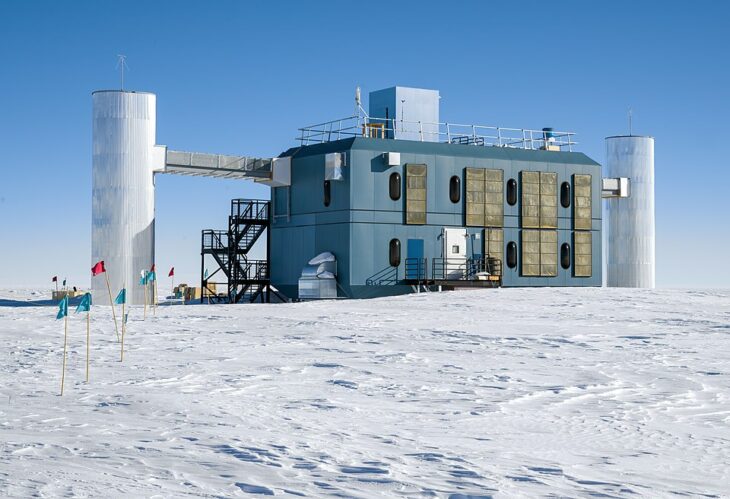There’s something out in the universe that surrounds us and moves through us at all times–a stream of particles and energy that we can’t see and is extremely difficult to detect. It sounds a lot like the Force from Star Wars, but it’s grounded in reality. In actuality, this “force” is a critical byproduct of nuclear and high-energy particle reactions that balance the universe, called neutrinos.
Neutrinos are tiny subatomic particles that carry no electrical charge, move near the speed of light, and stream through us all the time. Right now, as you’re reading this, 100 trillion neutrinos are passing through your body every second, but you’ll never notice them! They’re one of the most basic components of stuff in the universe because they aren’t made up of anything smaller. This makes them elementary particles.
Neutrinos come from nuclear and high-energy reactions. Most of the neutrinos that hit the Earth come from the Sun, with some originating from nuclear reactors. These neutrinos are at the low end of how energetic these particles can be, topping out at around 400 kiloelectronvolts (6 x 10-14 Joules). You’d need 9 quintillion of them to equal the amount of energy in a single 12 oz can of soda. Neutrinos from outside the solar system can also strike the Earth. These particles contain billions to trillions more energy, on the scale of teraelectronvolts. You’d only need 4 trillion of these to equal the amount of energy in the same soda can.
One group of astrophysicists was inspired to find out where high-energy neutrinos from deep space come from. They theorized that high-energy neutrinos are produced when fast-moving protons called cosmic rays hit unstable particles called pions, destroying them. Physicists think that these collisions sometimes produce a high-energy gamma-ray photon and other times produce a superhigh-energy neutrino. Following this logic, the team proposed that neutrino detectors should show a spike in detections coming from the same directions in space that other scientists have found gamma rays coming from.
To test this hypothesis, the team surveyed neutrino detections from the IceCube Neutrino Observatory in the South Pole. They explained that neutrino detectors like IceCube are one of only 3 ways scientists can observe things happening in space, along with gravitational wave detectors and telescopes. But it’s not easy. Scientists have to wait for the improbable occurrence that a neutrino directly hits the nucleus of an atom within a water molecule. That hit produces a distinct blue light, called Cherenkov radiation, that the detectors can measure and easily observe. By analyzing patterns in Cherenkov radiation emissions, scientists can tell how energetic the inciting neutrino was and, crucially, in which direction it came from.

The blue light pictured in this nuclear reactor is an example of Cherenkov radiation. “HFIR Refueling July 2015 (19944787756)” by Oak Ridge National Laboratory is licensed under CC BY 2.0.
Once the team located a neutrino detector, their next step was to find places in the sky where gamma rays typically come from. To do this, the astrophysicists used data from the Large High Altitude Air Shower Observatory or LHAASO. These data showed gamma rays coming from a region of the sky that contains the majority of the Milky Way Galaxy, known as the galactic plane. The team used the LHAASO data to construct a map of the sky highlighting regions where scientists working with LHAASO found gamma rays. They also made several model maps of hypothetical patterns of neutrino emissions to compare against the IceCube neutrino detections. The first model map assumed that neutrinos are equally likely to come from anywhere in the galactic plane, another assumed that neutrinos are most likely to come from regions in the galactic plane with dense gas, and 3 assumed that neutrinos come from any direction in the sky.
The astrophysicists compared these maps against IceCube data from a 2,500-day period between 2011 and 2018. During that time, around 900,000 high-energy neutrinos were detected. When they used statistics to compare the real detections to their 5 maps, they calculated that slightly more neutrinos came from the galactic plane, which is in line with their theory that these formed when cosmic rays collided with pions. They noted one particular location in the sky within the galactic plane and near the constellation Sagittarius which had the most prominent neutrino detections. They suggested future researchers focus on this area of the sky to study high-energy particle collisions in space.


